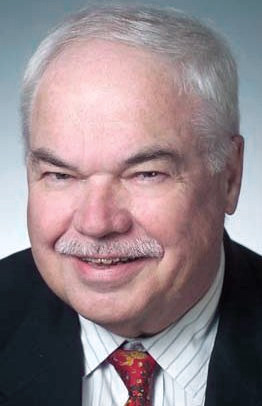

 Despite the significant traffic that comes from typed-in domain names, the public harumphing and clucking about type-in traffic is climbing in volume as it becomes clear how much money is involved. Articles this week show that domain names, and the people who make money on them, are making some commentators uncomfortable. more
Despite the significant traffic that comes from typed-in domain names, the public harumphing and clucking about type-in traffic is climbing in volume as it becomes clear how much money is involved. Articles this week show that domain names, and the people who make money on them, are making some commentators uncomfortable. more
 You may have read reports that the total amount of spam is on the decline. Don't believe them. In the month of October, I saw the amount of spam in my traps here roughly double, from about 50,000 per day to 100,000/day now. In conversations with managers at both ISPs and corporate networks, I'm hearing the same thing. more
You may have read reports that the total amount of spam is on the decline. Don't believe them. In the month of October, I saw the amount of spam in my traps here roughly double, from about 50,000 per day to 100,000/day now. In conversations with managers at both ISPs and corporate networks, I'm hearing the same thing. more
 In spite of the material we were presented with in Durban something has gone very wrong inside of ICANN Compliance. KnujOn has published a report which demonstrates that ICANN Compliance appears to completely collapse between September 2012 and December 2012. Following December 2012, ICANN seems to stop responding to or processing any complaints. It is around this time certain compliance employees start disappearing. This was not limited to the Sydney office as some would have us believe... more
In spite of the material we were presented with in Durban something has gone very wrong inside of ICANN Compliance. KnujOn has published a report which demonstrates that ICANN Compliance appears to completely collapse between September 2012 and December 2012. Following December 2012, ICANN seems to stop responding to or processing any complaints. It is around this time certain compliance employees start disappearing. This was not limited to the Sydney office as some would have us believe... more
 Last week, Columbia University's School of International and Public Affairs (SIPA), in collaboration with the Global Commission on Internet Governance (GCIG), hosted a conference on Internet governance and cybersecurity. The conference gathered a variety of experts to discuss issues pertaining to Internet governance, human rights, data protection and privacy, digital trade, innovation and security. more
Last week, Columbia University's School of International and Public Affairs (SIPA), in collaboration with the Global Commission on Internet Governance (GCIG), hosted a conference on Internet governance and cybersecurity. The conference gathered a variety of experts to discuss issues pertaining to Internet governance, human rights, data protection and privacy, digital trade, innovation and security. more
 And so it ends... Skype was always always a fun company to write about because they were always a bit of a rogue. The scrappy little startup that took on the megacorps of the telecom industry... and won in so many ways... look at their leading % of international calls... or the fact that per-minute call costs are now very clearly being commoditized down to zero... more
And so it ends... Skype was always always a fun company to write about because they were always a bit of a rogue. The scrappy little startup that took on the megacorps of the telecom industry... and won in so many ways... look at their leading % of international calls... or the fact that per-minute call costs are now very clearly being commoditized down to zero... more
 The term "jurisdiction" has various definitions in law, but for our purposes here we can say it is the power of some legal body to exercise its authority over a person or subject matter or territory. In the Internet today, it is territory that gives rise to many major issues. As in real estate, what matters in jurisdiction is "location, location, location". When the Internet and trademark rights began to intersect, it quickly became apparent that traditional concepts of the jurisdiction of courts and legislatures would be seriously strained by situations where a registrant in one country could use a registrar in a second country to register a domain name in yet a third country. more
The term "jurisdiction" has various definitions in law, but for our purposes here we can say it is the power of some legal body to exercise its authority over a person or subject matter or territory. In the Internet today, it is territory that gives rise to many major issues. As in real estate, what matters in jurisdiction is "location, location, location". When the Internet and trademark rights began to intersect, it quickly became apparent that traditional concepts of the jurisdiction of courts and legislatures would be seriously strained by situations where a registrant in one country could use a registrar in a second country to register a domain name in yet a third country. more
 In the past, most measurements of registrar market share have tracked overall registrar shares -- number of domains registered by a registrar divided by number of domains registered by all registrars. In this article, I propose some alternatives -- particular subsets of domains in which to measure registrar market shares, providing a basis for comparison with overall market shares. Results vary dramatically across these subsets, with implications on the future customer retention rates of the corresponding registrars. more
In the past, most measurements of registrar market share have tracked overall registrar shares -- number of domains registered by a registrar divided by number of domains registered by all registrars. In this article, I propose some alternatives -- particular subsets of domains in which to measure registrar market shares, providing a basis for comparison with overall market shares. Results vary dramatically across these subsets, with implications on the future customer retention rates of the corresponding registrars. more
 One of the chronic features of the Bitcoin landscape is that Bitcoin exchanges screw up and fail, starting with Mt. Gox. There's nothing conceptually very hard about running an exchange, so what's the problem? The first problem is that Bitcoin and other blockchains are by design completely unforgiving. If there is a bug in your software which lets people steal coins, too bad, nothing to be done. more
One of the chronic features of the Bitcoin landscape is that Bitcoin exchanges screw up and fail, starting with Mt. Gox. There's nothing conceptually very hard about running an exchange, so what's the problem? The first problem is that Bitcoin and other blockchains are by design completely unforgiving. If there is a bug in your software which lets people steal coins, too bad, nothing to be done. more
 China’s plans for low-Earth orbit Internet service constellations began with two projects, Hongyun (156 satellites) and Hongyan (864 satellites). These were eventually sidelined for Guowang, an ambitious, 12,992 satellite constellation that is expected to begin launching satellites this year. But, that is old news. China’s five-year plan designates satellite Internet as a strategic emerging industry and two new constellations have emerged, G60 (12,000 satellites) and Honghu–3 (10,000 satellites). more
China’s plans for low-Earth orbit Internet service constellations began with two projects, Hongyun (156 satellites) and Hongyan (864 satellites). These were eventually sidelined for Guowang, an ambitious, 12,992 satellite constellation that is expected to begin launching satellites this year. But, that is old news. China’s five-year plan designates satellite Internet as a strategic emerging industry and two new constellations have emerged, G60 (12,000 satellites) and Honghu–3 (10,000 satellites). more
 In 2020, the pandemic accelerated digitalization around the globe. Homeoffice, Online Shopping, Zoom Conferences became part of the daily life for billions of people. But if somebody would have expected that the Covid-19-Desaster is a wake-up call for the world to be more united, work hand in hand, and pool resources reducing risks of a borderless threat, this "somebody" was wrong. 2020 was dominated by "My country first." more
In 2020, the pandemic accelerated digitalization around the globe. Homeoffice, Online Shopping, Zoom Conferences became part of the daily life for billions of people. But if somebody would have expected that the Covid-19-Desaster is a wake-up call for the world to be more united, work hand in hand, and pool resources reducing risks of a borderless threat, this "somebody" was wrong. 2020 was dominated by "My country first." more
When thinking about the infrastructure of the Internet, it is important to consider the role of government in this infrastructure.
This is a question that involves two aspects: the role of government, and the role of the computer scientists who are part of the needed government structure or institution. Reviewing the history of the development of the Internet helps to highlight the importance of some role for both government and for computer scientists. more
 When properly used, the UDRP enables trademark owners to take control of abusive domain names. Yet sometimes the UDRP itself is misused by trademark owners to try to seize desirable domain names to which they have no legal entitlement. Is there a downside to misusing the UDRP to attempt a domain name hijacking? Unscrupulous companies at times misuse the UDRP by improperly invoking its power to compel a transfer of ownership in order to seize inherently valuable, non-infringing domain names that the companies desire for their own use. more
When properly used, the UDRP enables trademark owners to take control of abusive domain names. Yet sometimes the UDRP itself is misused by trademark owners to try to seize desirable domain names to which they have no legal entitlement. Is there a downside to misusing the UDRP to attempt a domain name hijacking? Unscrupulous companies at times misuse the UDRP by improperly invoking its power to compel a transfer of ownership in order to seize inherently valuable, non-infringing domain names that the companies desire for their own use. more
 In the news lately have been a number of incidents where U.S. courts, or the U.S. government itself has ordered domain registrars to shut down free speech. First was the E360 vs Spamhaus case, in which accused spammer E360 Insight sued anti-spam organization Spamhaus for labeling them as spammers and won by default when Spamhaus insisted that U.S. courts did not have jurisdiction over them in England and didn't appear. Unfortunately, U.S. courts did have jurisdiction over Spamhaus' domain registrar, who was nearly ordered to shut Spamhaus down (a court order was under consideration). Fortunately, Spamhaus was able to move their registration overseas before any shutdown order could be issued... more
In the news lately have been a number of incidents where U.S. courts, or the U.S. government itself has ordered domain registrars to shut down free speech. First was the E360 vs Spamhaus case, in which accused spammer E360 Insight sued anti-spam organization Spamhaus for labeling them as spammers and won by default when Spamhaus insisted that U.S. courts did not have jurisdiction over them in England and didn't appear. Unfortunately, U.S. courts did have jurisdiction over Spamhaus' domain registrar, who was nearly ordered to shut Spamhaus down (a court order was under consideration). Fortunately, Spamhaus was able to move their registration overseas before any shutdown order could be issued... more
 I attended the RIPE 61 meeting this month, and, not unexpectedly for a group that has some interest in IP addresses, the topic of IPv4 address exhaustion, and the related topic of the transition of the network to IPv6 has captured a lot of attention throughout the meeting. One session I found particularly interesting was one on the transition to IPv6, where folk related their experiences and perspectives on the forthcoming transition to IPv6. I found the session interesting, as it exposed some commonly held beliefs about the transition to IPv6, so I'd like to share them here, and discuss a little about why I find them somewhat fanciful. more
I attended the RIPE 61 meeting this month, and, not unexpectedly for a group that has some interest in IP addresses, the topic of IPv4 address exhaustion, and the related topic of the transition of the network to IPv6 has captured a lot of attention throughout the meeting. One session I found particularly interesting was one on the transition to IPv6, where folk related their experiences and perspectives on the forthcoming transition to IPv6. I found the session interesting, as it exposed some commonly held beliefs about the transition to IPv6, so I'd like to share them here, and discuss a little about why I find them somewhat fanciful. more
 What happens when governments don't just regulate content, but forcibly repurpose the very guts of the Internet's infrastructure to enforce their policies? The chilling answer, increasingly evident worldwide, is widespread, devastating collateral damage. Around the world, neutral systems like Domain Name System (DNS) resolvers and IP routing, the bedrock of our digital lives, are being weaponized as enforcement tools. more
What happens when governments don't just regulate content, but forcibly repurpose the very guts of the Internet's infrastructure to enforce their policies? The chilling answer, increasingly evident worldwide, is widespread, devastating collateral damage. Around the world, neutral systems like Domain Name System (DNS) resolvers and IP routing, the bedrock of our digital lives, are being weaponized as enforcement tools. more
Sponsored byWhoisXML API

Sponsored byVerisign

Sponsored byVerisign

Sponsored byRadix

Sponsored byCSC

Sponsored byIPv4.Global

Sponsored byDNIB.com
